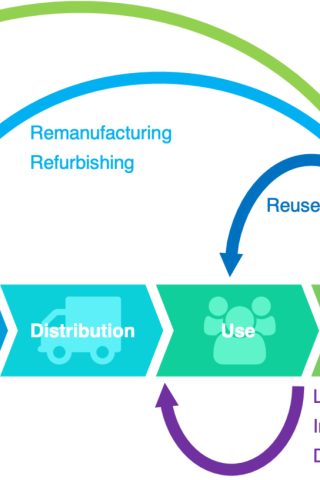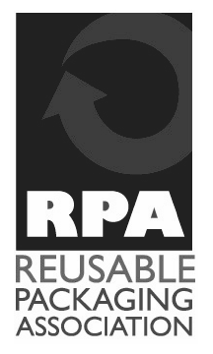Last month, that alphabet soup got a little less crowded when the Sustainability Accounting Standards Board and the International Integrated Reporting Council completed a merger, forming the Value Reporting Foundation.
For those who don’t know SASB, it’s a US-based nonprofit organization set up in 2011 that, as its name suggests, sets standards for environmental, social and governance reporting. The IIRC, established a year earlier, has a much broader mandate of setting global standards on how companies measure value.
The merger speaks to a larger trend, where the means of measuring ESG outcomes are becoming increasingly consolidated. For private equity, that means investors are becoming better equipped to ensure firms are putting ESG into practice.
“The world has moved towards integrated reporting, and it will move to all kinds of sustainability reporting that will be auditable,” said Wim Peeters, vice president of ESG rating agency EcoVadis. “Investors will be forced to produce nonfinancial data that is audited and produced according to certain reporting standards.”
In addition to the SASB-IIRC merger, there have been other initiatives to establish more standardized means of measuring ESG and sustainability. For example, the SASB and IIRC recently joined with three other standard-setting institutions—the Carbon Disclosure Project, the Climate Disclosure Standards Board and the Global Reporting Initiative—to set a new standard for climate-related financial disclosures.
Meanwhile, the International Financial Reporting Standards, which oversees the International Accounting Standards Board, launched a consultation paper on universal sustainability reporting guidelines. Both developments are expected to have implications for fund managers in terms of how they report on their ESG practice, as well as the investment decisions their LPs will make based on that information.
To date, the UN Principles of Responsible Investment have perhaps had the biggest influence on how private equity grapples with ESG compliance. The PRI was launched in 2006 with the idea that ESG can impact portfolio performance, and therefore should be considered along with traditional financial factors as investors fulfill their fiduciary duty.
The earliest PE signatories tended to be to larger, well-established firms with more resources for integrating ESG in their investment practice. KKR and Actis both signed up for the PRI framework in 2009, soon after it launched. A year prior, KKR also set up a Green Portfolio Program (the predecessor to its Green Solutions Platform) to report the ESG impact of its investments across several funds.
Many private equity firms are only just getting up to speed, including Asian PE investor PAG, which signed up for the PRI last month.
While the UN PRI remains important, some suggest that merely being a signatory will not be enough for LPs. When, in 2019, the Institutional Limited Partners Association (an industry body representing limited partners) launched its third set of principles, ESG was a core focus. As such, effective and transparent ESG reporting is now becoming a key consideration for all private equity investors, from the largest asset managers to smaller mid-market PE firms.
Steven Okun, CEO of Singapore-based ESG advisory firm APAC Advisors, was also the director of public affairs for KKR in Asia when the firm codified its private equity ESG policy. Okun said an ability to measure and demonstrate positive ESG outcomes is important for GPs looking to raise capital.
“Sophisticated LPs are now asking tougher questions about a firm’s ESG efforts,” he explained. “For GPs, it’s no longer enough to just say, ‘Oh, we have an ESG policy.'”
This sentiment was echoed in PitchBook’s Sustainable Investment Survey last year, in which nearly a third of respondents, including GPs and LPs, said the biggest challenge in sustainable investing is that it’s unclear how to define and measure impact outcomes.No one size fits all
One part of the issue is that LPs and GPs each have their own set of standards when it comes to rating investors’ ESG performance. For some, the hope is that, similar to the way financial accounting standards have evolved over the years, a nonfinancial reporting standard will emerge. It is easier said than done—especially when many private equity investors have their own well-established methodologies.
“A lot of our focus has been measuring how our GPs are integrating ESG,” said Yohan Hill, director of ESG at fund-of-funds Adams Street Partners, which was an early signatory of PRI and has its own ESG rating system that scores GPs from a scale of one to 100.
However, while some aspects of ESG performance are easier to measure—like using carbon dioxide emissions to measure climate impact—it can be more difficult to quantify other aspects. The PRI, for example, covers human rights and labor standards, doing business in conflict zones, and corporate governance issues such as cybersecurity tax avoidance, corruption and executive pay. These each impact industries in different ways.
“Increasingly, we are looking at platforms that we can use to get actual data on the portfolio companies that our GPs hold and also the practices of those companies. It can be challenging finding metrics that we can aggregate at a portfolio level,” said Hill.
“Every industry has unique industry issues, so you don’t necessarily have a common metric that you can use to report across the board,” he added.
To some extent, this can be mitigated by using industry benchmarking from an ESG perspective. EcoVadis’ Peeters said his firm could measure the performance of a plastics company, for example, by comparing it with its industry peers.
Nevertheless, Ryan McNelley, who is a London-based portfolio valuation expert with consultancy Duff & Phelps, made the point that PE managers will still have to demonstrate that the ESG initiatives they launched are not just delivering the nonfinancial returns, but also impacting the financial value of the company. Investors will still want to know if ESG measures have created value, whether the impact was neutral or even destroyed financial value.
“Speaking from a valuation perspective, it is clearly still a moving target,” said McNelley. He also made the point that ESG initiatives implemented during the PE ownership period may not come to fruition until after a company is exited. So until a manager is able to prove that kind of long-term impact, it will be hard to reflect that in the valuation upon exit.
“You can’t manage what you can’t measure,” added Andrew Probert, a managing director with Duff & Phelps who advises on deals. “I think until standardization comes, and it is prevalent, that will be the single biggest blocker to people adopting broad, wide-sweeping ESG initiatives and wanting to pay more attention to it.”







